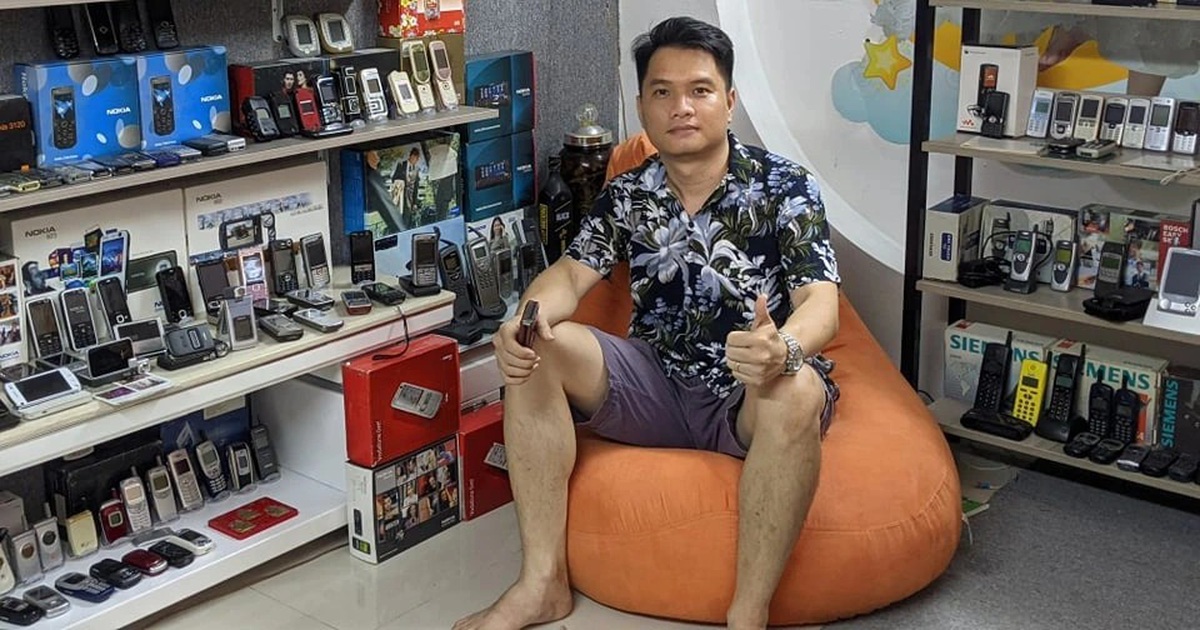More than 200 skeletons of large and small animals have been arranged by Nghia Nguyen, 35, in his living room's 30m2 area on a wall or a shelf, or in a cabinet.
Nghia is neither a scientist nor a researcher in any sense of the word. For him, collecting animal bone specimens and using them to adorn his home is a hobby that he loves.
The home radiates a spooky and eerie vibe due to a dark color palette and a variety of animal carcasses. The ambiance can send shivers down your spine.
Those who stumble into the room are surprised to discover a gigantic snake skeleton coiled up on a mound of fake skulls. The skeleton of a bat hanging upside down on a shelf designed like a coffin also might frighten viewers.
Nghia has repurposed a glass tank into a home for dozens of sets of wild fish bone specimens. He has arranged several skulls and horns of huge creatures on a wall.
Large birds such as hawks, eagles, owls, crows, peacocks, pheasants and crows are stuffed and placed on wooden shelves or with driftwood.
All of these one-of-a-kind "decorations" were found by him throughout the country or purchased in Thailand for a hefty sum. He has amassed a collection of roughly 200 bone and stuffed specimens over several years.
Among these are valuable specimens such as a well-preserved horse bone specimen or a stuffed albino peacock.
Animals’ bones were first used to adorn homes throughout Europe where the evolution of this art has been going on for a long time. However, this is a relatively new and highly scrutinized topic in Vietnam. The trip to Thailand inspired Nghia Nguyen to take up this new interest.
“I’d like to see it accepted as beautiful by Vietnamese”
Nghia often visited Thailand six years ago on vacation. He frequented the Chatuchak market (Bangkok) a lot back then. While walking around in the furniture business district, he found a wide variety of bones and stuffed animals.
Nghia was taken aback by the situation, wondering, “Why are these kinds of things being sold in the furniture industry? Is it possible that Thais use these artifacts to adorn their homes?”
In his search for a solution, he came across cafés, restaurants, hotels and other establishments that used a wide variety of uncommon templates of animal specimens for their design.
“I was stunned by the splendor of these specimen collections. They are used in interior design and to achieve a level of perfection. It seemed that Thai people have been experimenting with this form of art for quite some time,” he said.
“When I returned to Vietnam, I was eager to re-enact the tradition of collecting specimens that Thais used. Despite the fact that it's far from flawless, I'm glad I finally had the collection which is of course still a work in progress. I’d like to see it embraced as something beautiful by Vietnamese,” Nghia said.
Nghia has been working on his collection for over a decade, but he still has a long way to go. He more often than not was obliged to experiment, study and research in order to construct his own bone specimens which he was unable to acquire from Thailand.
He often makes his own templates out of animal bones, which he then adds to his collection. The bone specimen of a mink, owned by a personal friend of Nghia Nguyen, is one of these goods. His close buddy decided to donate his pet's body to him so that he could use it as a specimen when the animal died. A position of honor in the house was reserved for this template because of his fondness for it.
“Life, in all its forms, fascinates me. Instead of allowing the skeletons of dead animals to deteriorate, I gather them up and bring them home.”
 |
| Nghia Nguyen's chamber, which has a variety of animal bone collections. |
 |
| Snake skeletons curled up on a fake skull, and bat bones hung upside down on a coffin-shaped shelf. |
 |
| Specimens of some birds. |
 |
| Rare albino peacock specimen by Nghia Nguyen. |
 |
| Nghia meticulously places fish bone specimens in a glass aquarium. |
 |
| Nghia and his huge python specimen. |
 |
| Animal bones captivate Nghia. |
 |
| Hopefully, this practice may be accepted by everyone. |
Nguyen Son

Covetable 300 vintage-phone collection of young Saigonese
Luu Trieu Tuan Khanh has amassed an impressive collection of more than 300 vintage phones thanks to his lifelong interest in collecting old phones.

Turning agricultural waste into cash
The collection and reuse of agricultural by-products not only helps reduce greenhouse gas emissions but also helps farmers have the opportunity to enrich themselves.